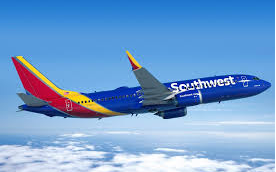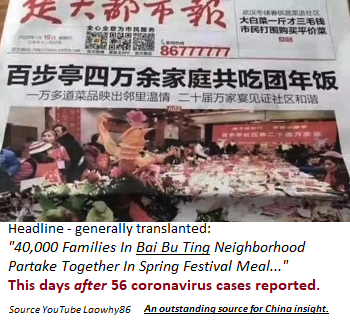Before We Start This Week…
Southwest Airlines At the IAFS
Andrew Watterson, EVP & Chief Revenue Officer To Participate At the #1 Aviation Event of The Year
The International Aviation Forecast Summit is the event that delivers over-the-horizon perspectives of the future of aviation… perspectives that give our attendees the competitive edge.
This is another reason that the international Aviation Forecast Summit should be a part of your calendar for 2020. This is the event where you get real direction and  perspectives from the airline and aviation leaders who will shape the future.
perspectives from the airline and aviation leaders who will shape the future.
Southwest can be expected to deliver some exciting new dimensions in route and market direction in the second half of 2020. With the expected return of the 737 MAX, it’s an airline that’s ready to bring their brand of service to more places, more often. This is one part of the IAFS not to miss.
Planning Air Service Outreach? Stop shooting in the dark. Make sure you join us in Cincinnati USA on August 23-25. The IAFS is where you get the straight understanding of the strategies of airlines and their market planning… right from the executives making the decisions. This allows our airport attendees to sharpen their outreach efforts, honing them to the real tactical directions of target airlines.
_______________
The Coronavirus
Facing The Air Travel Damage
As noted earlier, initial revisions to Boyd Group International’s Airports:China™ and Airports:USA® forecasts indicated as much as a 75% reduction in China-U.S. air traffic through June.
It’s no longer “as much” – it’s really “at least.”
Nonstops To/From China? – By 4Q, Maybe. The three U.S. airlines operating to points in China have chopped flights through March or April, depending on carrier, and with the mess evolving in the Chinese government response to the epidemic, it is a near lead-pipe cinch these cancellations will be extended.
We are seeing melt-down – justifiably so – in consumer interest in visiting China. The inept and politically-motivated cover-up of this epidemic until just about two weeks ago, and through the start of the super-dense Lunar New Year travel cycle, is an outrage.
When the facts are made clear, the PRC has single-handedly torpedoed what until recently was fixin’ to develop into the most exciting air travel growth situation in history.
The legitimate fear is that this one enormous event is going to make leisure travel to China in the future very unattractive, and travel from China not welcome due to medical uncertainties.
This could be for months, and the reputation of China as a destination damaged for years. Maybe. It will depend on the folks in Beijing.
As of today, our forecasts are predicting at least a 75% reduction in China-U.S. travel for the full year 2020, and at least a 15% decline in domestic air travel in China.
The Background Story Isn’t Going Away. It’s not just the coronavirus. It’s the handling and policies and propaganda that will leave a mark on China as a leisure destination… and as a business destination, too.
Just touching on this, the coronavirus and its propensity to be rapidly spread. was discovered in late December. Doctors and journalists, however, were warned by the PRC government to not “engage in false rumors” in claiming it even existed.
Then, to prove to the people that there was nothing to worry about, the government barely two weeks ago staged a massive community Lunar New Year Celebration of 40,000 families in Wuhan. Even though there were dozens of cases of the virus already reported.
 We’re again showing the newspaper headline trumpeting the fun and frivolity of the event on January 18.
We’re again showing the newspaper headline trumpeting the fun and frivolity of the event on January 18.
It has been ignored in the media, which too much is taking whatever comes out of China as rock-solid dogma.
Right after that, thousands of those that attended this hoedown left town for the traditional holiday migration. That spread the coronavirus across the entire country, as well as to points across the globe.
Newsreels v Reality. Only now, the PRC government, to the delight and kudos of the WHO (of which China is a major member, by the way) and the swooning of some in the media to whom checking facts is unnecessary, is taking firm and “aggressive” action.
They are sending hundreds of doctors to Wuhan to treat the illness. They are, in some cases literally, boarding up people in their homes. They are, according to their groupies in the international media, building hospitals almost overnight.
Wow. Action.
But the question comes up… do those doctors have protective garments? Do they have any sort of face masks? Are those “hospitals” really operative? And how come just several days ago, they were telling the world that Wuhan had adequate facilities?
At one point, the official media proudly showed a picture of the first built-in-days new hospital. Oops. It wasn’t a hospital at all. The picture was actually a photo lifted off of a website of a company advertising modular buildings.
The bottom line for air travel is that the underlying realities of how this situation has been dealt with is not one that’s very encouraging.
It Started Before The Coronavirus. From the very robust growth in travel and trade with China that we saw just four years ago, the entire situation has changed. Even before this epidemic, the fraying China economy was in line to put a big dent in travel to the U.S. Plus, the prior welcome that foreigners experienced in China started to decline, as political realities began to sink in.
How Do You Say “Chutzpah” In Mandarin? Now that the U.S. has implemented quarantine for citizens coming back from China, and has effectively advised Americans not to go there because of the continuing spread of the coronavirus, the PRC government is quite miffed.
They are claiming that such actions are not “friendly.”
Return To “Normal” – There Is No Normal. The PRC government has bungled this situation into what has spread as a health crisis in China, and one expanding to the rest of globe.
Combine this with other pre-epidemic trends and policies that have been implemented in China, such as increased restrictions on foreigners and travel within China, and we unfortunately would conclude that the vision that existed four years ago for China-U.S. travel is now gone.
When this health epidemic winds down (when?) and if there are changes in policies in Beijing in regard to foreigners, a new paradigm for U.S. – China travel will emerge. Maybe stronger than before.
But it is going to depend on actions in China. Not outside.